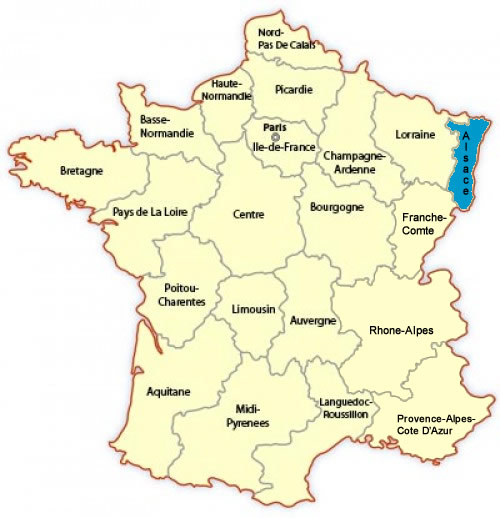The Liguria Region of Italy
 Location
Location
Liguria is a coastal region of north-western Italy, the third smallest of the Italian regions. Its capital is Genoa. It is a popular region for tourists with its beautiful beaches, picturesque little towns, and good food.
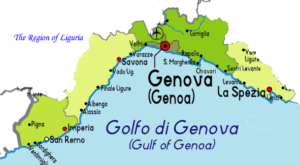
Liguria borders France to the west, Piedmonte to the north, and Emilia-Romagna and Toscana to the east. It is located on the Ligurian Sea. The narrow strip of land is bordered by the Ligurian Sea, the Alps and the Apennine mountains. Some mountains rise above 2000 m; the watershed line runs at an average altitude of about 1000 m. Liguria measures just 5,422 square kilometers of which 3524.08 kilometers are mountains and 891.95 are hills.
Climate: The hills that immediately circumvent the coast together with the sea account for a mild climate year-round. The average winter temperatures are 7 to 10°C (45 to 50 °F) and summer temperatures of 23 to 24 °C (73 to 75 °F), making for a pleasant stay even in the dead of winter. Rainfall can be abundant at times, as mountains very close to the coast create an orographic effect. Genoa and La Spezia can see up to 2,000 mm (79 in) of rain in a year; other areas instead show the normal Mediterranean rainfall of 500 to 800 mm (20 to 31 in) annually.
Geography: The coastline is generally not very jagged, and is often high. The only two exceptions are Portovenere and Portofino. There are small beaches, but there are no deep bays and natural harbors except for those of Genoa and La Spezia.
Liguria’s geography is mainly mountainous and hilly, with narrow strips of flatland along some stretches of coast and in some low flood valleys. Liguria is divided into four provinces: Genova, Imperia, La Spezia, and Savona. Genova is the capital and an important seaport. Liguria’s surface consists of mountains and hills, teeming with woods. Both the Alps and the Apennine mountains run through Liguria’s 2,092 square miles of land.
History: Because of its isolated coastline, Liguria has been inhabited since the 5th century BC by the fiercely independent Ligurian peoples. The Romans were not able to romanize these people for many centuries, and small towns like the Cinque Terre, never really conquered by Rome. After the fall of the Empire the region was ruled by Byzantine and Lombard factions, but because of its inaccessibility by land it maintained a level of autonomy that was always at risk from invasion by Saracens, Normans or Pirates. By the Middle Ages Genoa ruled the entire Ligurian province because it was a powerful maritime republic, more powerful than its rivals in Pisa and Venice. It was in the wars with Venice that Marco Polo was captured, and dictated his adventures while in a Genoese prison. Liguria was later annexed by Napoleon and given to the House of Savoy after his final defeat. This loss of independence led to Ligurian patriots like Mazzini and Garibaldi (from the Savoy city of Nice), to start the Italian Risorgimento and the final goal of the modern nation of Italy.
Culture: Mountains and steep cliffs that rise loftily out of the Ligurian Sea in the most northerly part of the Western Mediterranean makeup the fascinating landscape that impresses people on their journey through this historically rich and dynamic region. The capital Genoa, one of the most important ports in the Mediterranean and home to Christopher Columbus, was already a powerful maritime state in the Middle Ages. Today one finds impressive buildings, elegant mansions, and wonderful churches — all of which bear witness to Liguria’s glorious past and blend in perfectly with the modern city. In other parts of Liguria, there are also numerous historical treasures. Intact and luxuriant Mediterranean vegetation exists in the mountain regions of Portofino and Cinque Terra. Portovenere is a small jewel on the Mediterranean coast. Sanremo is one of Italy’s most famous bathing resorts and the place where the annual Italian pop music festival takes place. The beautiful Benedictine monastery of S. Fruttuoso merits a special visit. There are many other important historical monuments to be explored.
Liguria is where pesto originated, one of the most popular sauces in Italian cuisine. Seafood is a major staple of Ligurian cuisine as the sea is an integral part of the region’s culture. Another important feature is the beach. Tourists have been flocking to the Italian Riviera for decades to experience its calm, deep blue water.
Travel by Air:
Of Liguria’s two civil and one military airports, the Genoa Sestri International Airport or Cristoforo Colombo Airport is by far the busiest of the three. It was built on an area of reclaimed land with a runway that is two and a half kilometers long and has efficient flight and ground facilities.
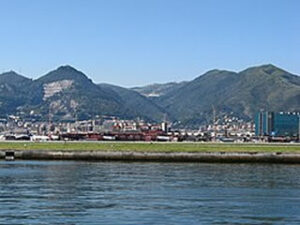 It is open all the year round, and is particularly convenient because it is in central Liguria and is only 6 kilometers from the center of Genoa. There are regular connecting flights to the main European towns, the UK and main Italian airports. Visit its website for more specific information.
It is open all the year round, and is particularly convenient because it is in central Liguria and is only 6 kilometers from the center of Genoa. There are regular connecting flights to the main European towns, the UK and main Italian airports. Visit its website for more specific information.
There is a convenient, fast and punctual hourly bus service, every day of the week, connecting the Airport with the city center and railway stations. The Volabus service connects travelers from Stazione Principe F.S. to Cristoforo Colombo International Airport in approximately 30 minutes and costs 6 euro plus a 60 minute journey on the AMT network (buses, metro, public elevators and funicular railways) in the same day.
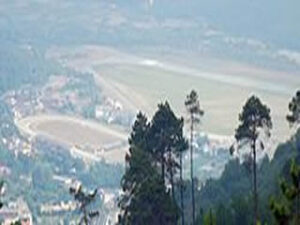 Albenga Airport, also known as Clemente Panero International Airport, now called Riviera Airport, is located 3.24 NM west of Albenga, a city in the province of Savona. It is between Savona and Imperia, approximately seven kilometers west of the town of Albenga, in the community of Villanova d’Albenga in Liguria, northern Italy. It was formerly known as Villanova d’Albenga International Airport. It generally serves the tourist area of western Liguria and is heavily used for flower exportation. Visit its website for specific information. While Monte-Carlo is less than an hour’s travel by car, a helicopter company based at the airport can connect passengers from the runway directly to the Principality of Monaco in less than 20 minutes.
Albenga Airport, also known as Clemente Panero International Airport, now called Riviera Airport, is located 3.24 NM west of Albenga, a city in the province of Savona. It is between Savona and Imperia, approximately seven kilometers west of the town of Albenga, in the community of Villanova d’Albenga in Liguria, northern Italy. It was formerly known as Villanova d’Albenga International Airport. It generally serves the tourist area of western Liguria and is heavily used for flower exportation. Visit its website for specific information. While Monte-Carlo is less than an hour’s travel by car, a helicopter company based at the airport can connect passengers from the runway directly to the Principality of Monaco in less than 20 minutes.
The third airport is located in Luni, called the Luni Airport. It has no international or intercontinental flights. The “Bartolomeo Arrigoni” airport of Sarzana-Luni ( ICAO : LIQW ) is a military airport open to civil air traffic affiliated with the Italian Aero Club d’Italia located in the municipality of Sarzana , in the locality of San Lazzaro . It is mainly an air base used by the Navy and the Coast Guard and to a limited extent also by general aviation , with the presence of a flying club.
Travel by Train/Bus:
The closest railway station to the airport is Genova Sestri Ponente-Aeroporto, served by Trenitalia regional trains to/from Piazza Principe/Brignole, Savona and Ventimiglia.
The station is then connected to the airport by a bus service called Flybus, operated by AMT, which departs with a 15 minute frequency every day between 6.00 am and 10.00 pm. Fares are €1,50 (AMT single tickets) or €1,60 (AMT+Trenitalia integrated fares).
As of 1 August 2020, regional bus operator ATP resumed its Airport Shuttle service between the airport and the other localities in Genoa’s Metropolitan City. A one way fare is €20, while a return journey costs €40. As of now, people wishing to travel on this service must book a seat at least 4 days before their travel date and must await a response from the operator’s reservation department.
The regional rail network offers conveniently timed connections to all destinations in Liguria making traveling to Liguria by train a pleasant and convenient way to explore the region.
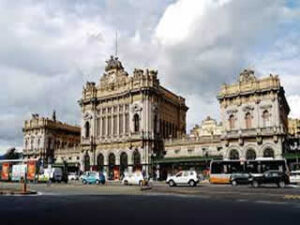
The rail network follows the route of the main highway network. The Ventimiglia-La Spezia line serves passengers of Northern Italy, from Turin on the Savona and Genoa route, from Milan on the Genoa route and from Parma on the La Spezia route, and it connects to the Tyrrhenian line to Rome, Naples and Southern Italy. Liguria is also connected by the main train lines on international routes from Nice, Mont Cenis, Gothard, Germany, Austria and Ex-Yugoslavia.
The regional trains are also the recommended way of transport when visiting the National Park of Cinque Terre. It is possible to reach the villages of Cinque Terre by car, but there is no use for a car once you are there as the Cinque Terre historical centers are closed to car traffic.
For more detailed schedule information or to buy train tickets, both national and international, consult the website for Trenitalia. Be sure to request regional trains and information for Liguria.
High speed trains including Italo and Frecciarossa stop in Genoa, and La Spezia as well as other important cities and destinations in Italy.
Travel by Car:
A trip through Liguria by car is a wonderful experience with the mountains on one side and the beach on the other, amidst tunnels and breath-taking scenery. It is great to be independent and to visit the many medieval mountain villages. Note that in some places it is impossible to drive though like Cinque Terre. Also, traffic in big cities is nerve racking. Keep in mind that gas and tolls are very expensive.
